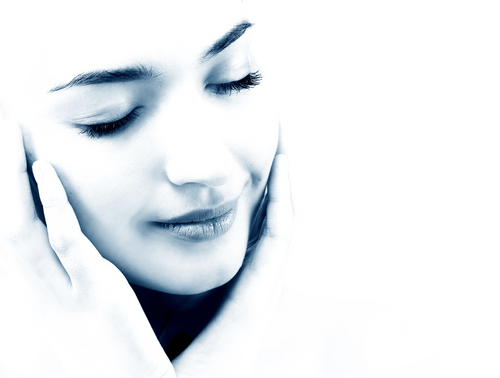
Back in June we talked about cosmetic procedures that are considered mostly safe, and those that are more risky because of toxic chemicals or other dangers. Several Cinco Vidas readers wrote in about terrible side effects and complications they had experienced as a result of laser treatments. I promised to follow-up with a real doctors opinion on the subject. Below is a guest post written by Dr. Madeline Krauss, who is board certified in dermatology and practices general and surgical dermatology. You can read more about her here.
Bottom line? Make sure you do your research when considering laser treatments. They are never 100 percent risk-free, but you can increase your odds of having a successful experience by following Dr. Krauss’ advice.
 A laser is a tool that can be used to improve the skin. Commonly it is used to remove hair, brown spots, superficial vessels and to improve texture and even help with acne and scarring.
A laser is a tool that can be used to improve the skin. Commonly it is used to remove hair, brown spots, superficial vessels and to improve texture and even help with acne and scarring.
Like any tool, lasers can be used with great success, or they may fail to succeed in improving their target. There are benefits and risks of undergoing laser treatments. The benefits can be amplified, and the risks minimized, by seeking treatment with the most appropriate laser, performed by a well-trained, experienced medical professional, in the proper patient candidate. Like a scalpel, or a medication such as aspirin, the tool can be used for improvement and medical care, but even in the best case scenarios, adverse events are possible.
Success, or Failure? Check on Three Things
Lets examine the three variable parameters that influence the success, failure or risk from laser treatment. First, it’s important to use the most appropriate laser to treat a condition. Like the expression, “If all you have is a hammer, then everything looks like a nail,” there are many lasers on the market and each is better for some conditions than others.
For example, laser hair removal is best performed by Diode lasers, Alexandrite lasers, and for darker skins, Nd-Yag lasers. Intense pulsed light machines (very similar to lasers, but utilizing multiple instead of single wavelengths) can help with hair removal, but may not be as effective as the other types. Look for offices that have multiple lasers for a variety of indications so they can use the best laser for each task.
Second, it is important to treat only patients that are at low risk for a given procedure. Very dark skinned patients are at high risk for complications from many laser procedures. Dark skinned patients must be treated by practitioners with a great deal of experience with their particular skin type and lasers that are safe for them. Patients who are tanned should generally be turned away at the door. You must be protected vigorously from the sun (with not just sunscreen, but hats and clothing as well) for 8 weeks before and after most laser treatments. Our office performs almost no laser procedures all summer. The laser center at the mall, however, does not want to forgo revenue all summer long, so may inappropriately agree to treat patients even when they have had too much sun. Patients who form so-called “keloid scars” (firm, raised) are at high risk if they were to be injured with a laser. They are best off avoiding laser treatments.
Third, and most important, the laser procedure should be done in a facility with an on-site physician ready to handle any side effects, questions or concerns. Our office sees many patients injured in laser clinics where the treating staff member had no idea what to do if the patient was injured by excessive heat, too high an energy, or infection, and no physician was available to treat the patient. This is unacceptable. Ask who the overseeing physician is, and if she/he is on the premises. If the answer is no, seek a different laser treatment location. Be understanding and glad if you are turned away from your treatment due to too much sun exposure, infection in the area (such as a cold sore on the lip) or because the office doesn’t have the appropriate laser for your skin type. You have found an ethical practitioner.
Never 100 Percent Safe
Finally, even in the best of hands, though most patients do very well with lasers for hair removal, sun damage, texture, and vessels and brown spots, even the most seasoned physician will perform a treatment resulting in a side effect. This may be a temporary injury or more rarely result in a permanent scar or discoloration. You will sign a consent form. Read it carefully. Though very rare when all the parameters above are fulfilled, no procedure is 100% risk free.
Laser hair removal, facial rejuvenation and other laser and intense pulsed light treatments are here to stay. They have improved the quality of life for millions of patients. Choose carefully and you can benefit as well.
Do you have more tips for increasing the odds of enjoying a successful laser treatment? Please share.
Picture courtesy Dr. Zubin Medora via Flickr.com.

